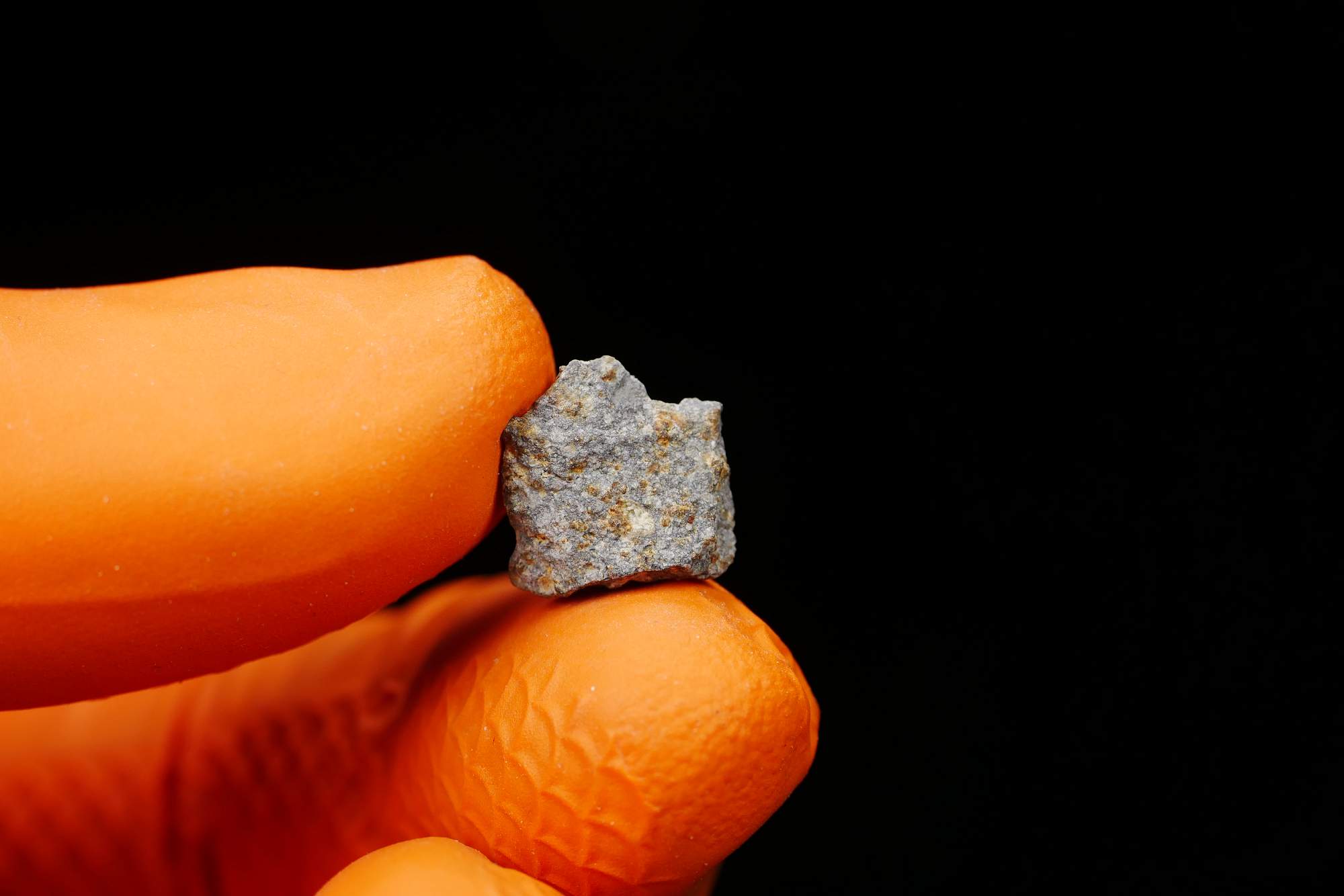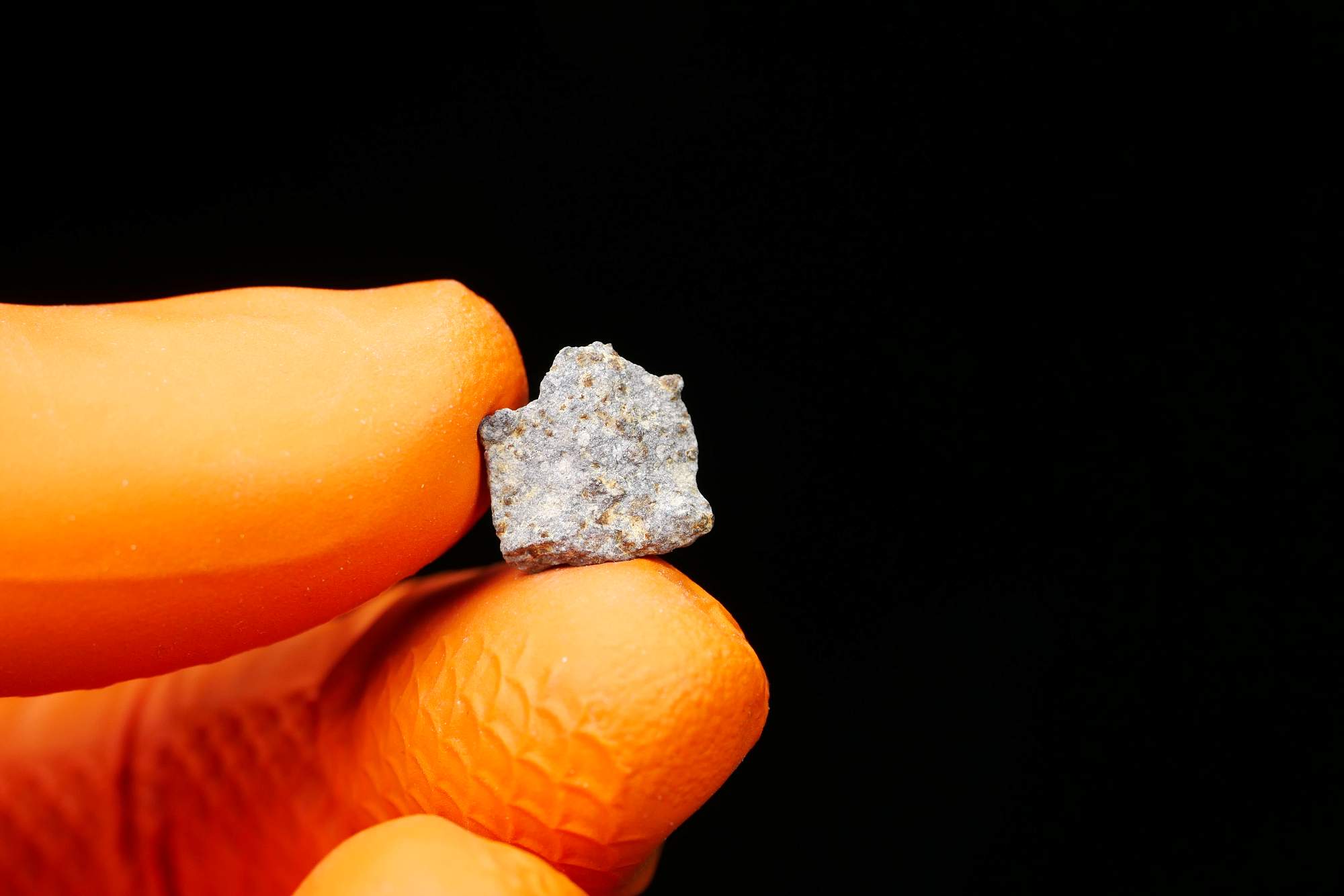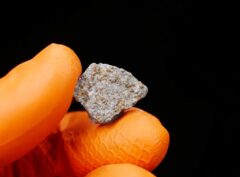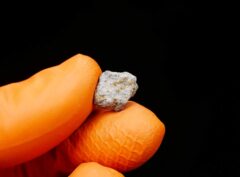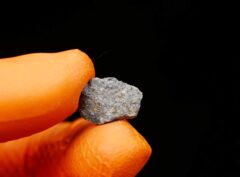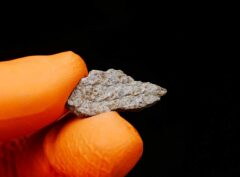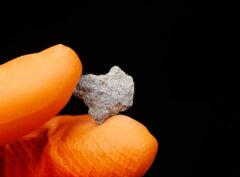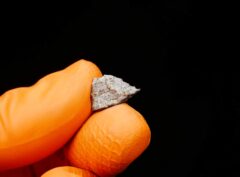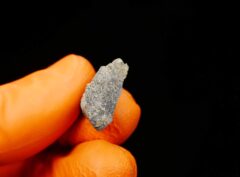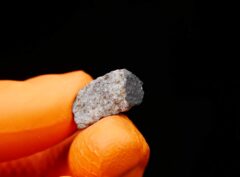Classification: Chondrite H5 S3 / W0
Time/Place: 20 Nov 2016 in Bolivia
Mass: 50kg
History: A bright fireball appeared over Aiquile, Cochabamba district of Bolivia, on 20 November 2016, 17:57 local time (UTC-4). Stones fell in a strewn field of at least 12 × 2 km (northeasterly direction) in the following Aiquile communities: Tablamayu, Panamá, Chawar Mayu, Chaqo K’asa, Barbechos and Cruz Loma. The main bolide fragmentation occurred over the Tablamayu community, 12 km north of Aiquile. In the Cruz Loma community, C. Veizaga witnessed the fall of the largest stone (36.3 kg) about 500 m from him. He recovered the stone and in the following day the local Aiquile government (Luiz L. Arnez, Marco Cardona, Franz Navia, William Rodriguez, Jesus Yave) took the stone to the city museum. In the Panamá community, Roberto Soto witnessed the fall and recovered two other fragments (565 g, 2.2 kg). SERGEOMIN (Miguel A. Muriel, G. Villca, A. Perez), UMSA (Gonzalo Pereira), Brazil NM collaborators (Andre R. Moutinho, José M. Monzon) and S. Medina found additional fragments in the Panamá community. A. Moutinho found a 98 g fragment which was used for classification.
Physical characteristics: The 36.3 kg stone was almost fully covered with fusion crust and remaglypts, with only small pitted corners (47 × 17 × 26 cm); the 2.26 kg stone is semi-prismatic and almost fully covered with fusion crust; the 565 g piece is a fragment mostly without fusion crust.
Petrography: Medium shock stage (S3), chondritic texture and mineralogy and mineral compositions of an equilibrated ordinary chondrite. Porphyritic olivine and radial pyroxene chondrules dominate.
Geochemistry: Microprobe analyses show an equilibrated olivine and pyroxene composition of Olivine (Fa18.3±0.5; n=53), low-Ca pyroxene (Fs 15.7±0.7; n=37). Mean Cr2O3 of olivine is 0.048 wt.% for both matrix and clasts areas.
Classification: H group classification based on: chondrule mean apparent diameter (~0.3 mm), content of metallic Fe,Ni + FeS (9.9 vol%), Co content of kamacite (0 – 0.3 wt%). Petrologic type 5 classification based on chondritic texture, and plagioclase <50 μm. Shock S3 based on undulatory extinction, irregular fractures of olivine. Most fragments show no brecciation, but some have slightly darker gray clasts with boundaries indiscernible under the microscope. Although both areas show identical composition, the darker areas show apparently well defined chondrules. Cathodoluminescence images also are very similar in the two areas. Some isolated melt pockets and small dark inclusions were observed.
NOTE: Specimens with M. Farmer label.



